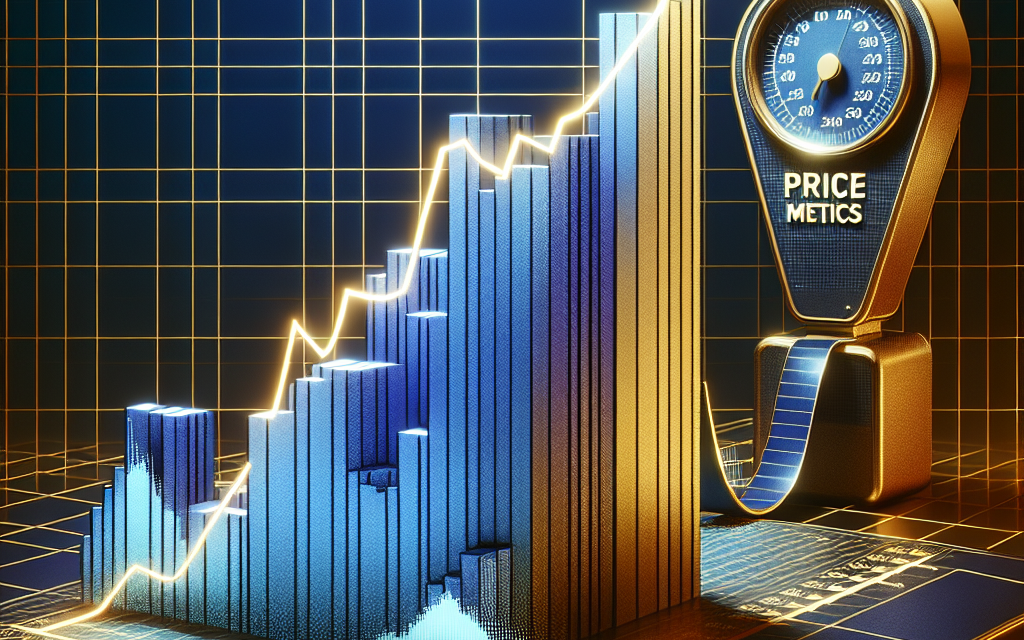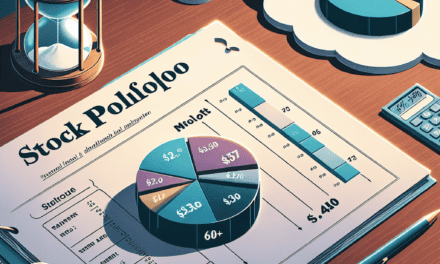“US Services Index Soars as Price Metrics Hit 2023 Peak!”
Introduction
The US Services Index has shown a notable increase, reflecting a robust expansion in the services sector as price metrics have surged to their highest levels in 2023. This rise indicates strong consumer demand and a resilient economy, despite ongoing inflationary pressures. The uptick in the index suggests that service providers are experiencing heightened activity, which could have significant implications for overall economic growth and monetary policy moving forward. As businesses adapt to changing market conditions, the data highlights the critical role of the services sector in driving economic recovery and stability.
US Services Index: Understanding the Recent Surge
The recent surge in the US Services Index has captured the attention of economists and market analysts alike, as it reflects a significant shift in the economic landscape. This index, which measures the performance of the services sector, has shown a notable increase, indicating robust growth in an area that constitutes a substantial portion of the US economy. The services sector, encompassing industries such as healthcare, finance, and hospitality, plays a critical role in driving economic activity, and its performance is often seen as a barometer for overall economic health.
One of the most striking aspects of this recent surge is the accompanying rise in price metrics, which have reached their highest levels in 2023. This increase in prices suggests that demand within the services sector is outpacing supply, a phenomenon that can lead to inflationary pressures. As businesses respond to heightened demand by raising prices, consumers may begin to feel the pinch, which could influence spending patterns and overall economic growth. Consequently, the interplay between the rising Services Index and escalating price metrics warrants close examination, as it may have far-reaching implications for monetary policy and consumer behavior.
Moreover, the increase in the Services Index can be attributed to several factors, including a rebound in consumer spending and a gradual recovery from the disruptions caused by the COVID-19 pandemic. As restrictions have eased and confidence has returned, consumers have resumed spending on services that were previously curtailed. This resurgence in demand has not only bolstered the services sector but has also contributed to job creation, further stimulating economic activity. The positive momentum in the Services Index reflects this dynamic, as businesses strive to meet the growing needs of consumers.
In addition to consumer spending, the labor market has shown signs of strength, which has further supported the Services Index. With unemployment rates remaining low and job openings plentiful, workers have greater confidence in their financial stability, leading to increased discretionary spending. This trend is particularly evident in sectors such as travel and leisure, where pent-up demand has driven a surge in activity. As more individuals engage in services that were previously limited, the Services Index is likely to continue its upward trajectory.
However, it is essential to consider the potential challenges that may arise from this growth. While a rising Services Index is generally a positive indicator, the accompanying increase in prices raises concerns about inflation. Policymakers must navigate this delicate balance, as excessive inflation could prompt the Federal Reserve to implement tighter monetary policies, which may dampen economic growth. Therefore, monitoring the relationship between the Services Index and price metrics will be crucial in understanding the broader economic implications.
In conclusion, the recent rise in the US Services Index, coupled with the highest price metrics of 2023, highlights a complex interplay of factors influencing the economy. As consumer spending rebounds and the labor market strengthens, the services sector is poised for continued growth. However, the potential for inflationary pressures necessitates careful observation and strategic policymaking. Ultimately, the trajectory of the Services Index will serve as a vital indicator of economic health, guiding both businesses and policymakers in their decision-making processes. As we move forward, the implications of these trends will undoubtedly shape the economic landscape in the months to come.
Price Metrics in 2023: Key Factors Driving Increases
In 2023, the US Services Index has demonstrated a notable increase, reflecting a robust performance in the service sector. This rise is particularly significant as it coincides with a surge in price metrics, which have reached their highest levels for the year. Understanding the key factors driving these increases is essential for grasping the broader economic landscape. Several interconnected elements contribute to this phenomenon, including inflationary pressures, supply chain dynamics, and shifts in consumer behavior.
To begin with, inflation has been a persistent concern in the US economy, influencing various sectors, including services. The Consumer Price Index (CPI) has shown upward trends, prompting service providers to adjust their pricing strategies accordingly. As costs for raw materials and labor continue to escalate, businesses are compelled to pass these expenses onto consumers. This adjustment is evident in sectors such as hospitality, healthcare, and transportation, where service providers have reported increased prices to maintain profit margins. Consequently, the rise in the Services Index can be partially attributed to these inflationary pressures, which have led to higher service costs across the board.
Moreover, supply chain disruptions, which have plagued the global economy since the onset of the COVID-19 pandemic, continue to exert influence in 2023. While some improvements have been noted, challenges remain, particularly in the logistics and transportation sectors. Delays and shortages in essential goods have forced service providers to adapt their operations, often resulting in increased costs. For instance, businesses reliant on timely deliveries have had to invest in alternative logistics solutions, which in turn raises operational expenses. As these costs accumulate, service providers are again left with little choice but to increase prices, further contributing to the upward trend in price metrics.
In addition to inflation and supply chain issues, shifts in consumer behavior have played a crucial role in driving price increases. As the economy has gradually reopened, there has been a resurgence in demand for various services, from dining out to travel. This pent-up demand has created a competitive environment where service providers can raise prices without significantly deterring customers. Consumers, eager to return to pre-pandemic activities, are often willing to pay a premium for enhanced experiences or convenience. This willingness to spend has emboldened businesses to implement price hikes, thereby contributing to the overall increase in the Services Index.
Furthermore, the labor market has also been a significant factor influencing price metrics in 2023. With unemployment rates remaining low, many service industries are facing labor shortages, which have led to increased wages as companies strive to attract and retain talent. Higher labor costs inevitably translate into increased service prices, as businesses seek to offset these expenses. This dynamic is particularly evident in sectors such as healthcare and hospitality, where the demand for skilled workers has intensified, further driving up operational costs.
In conclusion, the rise in the US Services Index, coupled with the peak in price metrics for 2023, can be attributed to a confluence of factors. Inflationary pressures, ongoing supply chain challenges, shifts in consumer behavior, and labor market dynamics all play pivotal roles in shaping the current economic environment. As these elements continue to evolve, they will undoubtedly influence the trajectory of the service sector and the broader economy in the months ahead. Understanding these key drivers is essential for stakeholders aiming to navigate the complexities of the current economic landscape effectively.
Implications of Rising Services Index on the Economy
The recent rise in the US Services Index, coupled with the surge in price metrics reaching their highest levels in 2023, presents a multifaceted picture of the current economic landscape. This development carries significant implications for various sectors of the economy, influencing everything from consumer behavior to monetary policy. As the Services Index reflects the health of the service sector, which constitutes a substantial portion of the US economy, its upward trajectory suggests a robust demand for services, indicating that consumers are willing to spend. This willingness to engage in consumption is a positive sign, as it often correlates with increased economic activity and growth.
However, the rising price metrics accompanying this index raise concerns about inflationary pressures. As service providers respond to heightened demand, they may increase prices to maintain profit margins. This scenario can lead to a cycle where rising costs prompt consumers to adjust their spending habits, potentially curtailing the very growth that the Services Index indicates. Consequently, while the increase in the Services Index is a positive indicator of economic vitality, it also necessitates careful monitoring of inflation trends, as persistent price increases could undermine consumer purchasing power and overall economic stability.
Moreover, the implications of a rising Services Index extend to the labor market. A thriving service sector typically translates into job creation, as businesses expand to meet growing demand. This can lead to lower unemployment rates and increased wage growth, which further fuels consumer spending. However, if inflation continues to rise alongside wage increases, the real income of consumers may not see significant improvement, potentially dampening the positive effects of job growth. Therefore, while the Services Index suggests a healthy labor market, the interplay between wages and inflation remains a critical factor in determining the overall economic outlook.
In addition to consumer behavior and labor market dynamics, the rising Services Index also influences monetary policy decisions. The Federal Reserve closely monitors economic indicators, including the Services Index and inflation metrics, to guide its interest rate policies. An increase in the Services Index, particularly when accompanied by rising prices, may prompt the Fed to consider tightening monetary policy to curb inflation. This could involve raising interest rates, which would have a cascading effect on borrowing costs for consumers and businesses alike. Higher interest rates could slow down economic growth by making loans more expensive, thereby impacting investments and consumer spending.
Furthermore, the implications of a rising Services Index are not confined to the domestic economy; they also resonate on a global scale. As the US economy is a significant player in the global market, changes in its service sector can influence international trade dynamics. A strong service sector may enhance the competitiveness of US businesses abroad, potentially leading to increased exports. Conversely, if inflationary pressures lead to tighter monetary policy, it could strengthen the dollar, making US exports more expensive for foreign buyers and potentially impacting trade balances.
In conclusion, the rise in the US Services Index, alongside the peak in price metrics, presents a complex interplay of positive economic signals and potential challenges. While it indicates a robust demand for services and the possibility of job creation, it also raises concerns about inflation and its implications for consumer behavior and monetary policy. As stakeholders navigate this evolving landscape, the need for vigilance in monitoring these trends becomes paramount to ensure sustainable economic growth.
Sector Analysis: Which Industries Are Benefiting Most?
The recent rise in the US Services Index, coupled with price metrics reaching their highest levels in 2023, has sparked interest in understanding which industries are benefiting most from these economic shifts. As the services sector plays a crucial role in the overall economy, its performance can provide valuable insights into consumer behavior and business trends. Notably, certain industries have emerged as frontrunners, capitalizing on the favorable conditions created by the rising index and price metrics.
One of the most prominent beneficiaries of this trend is the hospitality and leisure industry. As consumer confidence grows and disposable income increases, more individuals are willing to spend on travel, dining, and entertainment. This resurgence is evident in the robust performance of hotels, restaurants, and recreational services, which have seen a significant uptick in demand. The pent-up desire for experiences, particularly following the pandemic, has led to a surge in bookings and reservations, thereby driving revenue growth in this sector. Furthermore, the rising prices in this industry, while a concern for some consumers, have not deterred spending, indicating a strong willingness to invest in leisure activities.
In addition to hospitality, the healthcare sector is also experiencing notable benefits. With an aging population and an increasing focus on health and wellness, demand for healthcare services continues to rise. The services index reflects this trend, as healthcare providers, including hospitals and outpatient facilities, report increased patient volumes and higher service prices. This growth is further supported by advancements in medical technology and a greater emphasis on preventive care, which have expanded the range of services offered. As a result, healthcare providers are not only seeing an increase in the number of patients but also in the prices they can command for their services.
Moreover, the technology services industry is thriving in this environment. As businesses increasingly rely on digital solutions to enhance efficiency and customer engagement, demand for IT services, software development, and cybersecurity has surged. The services index highlights this growth, with many technology firms reporting higher revenues and expanding their service offerings. The rise in prices for technology services can be attributed to the increasing complexity of solutions required by businesses, as well as the need for ongoing support and maintenance. Consequently, this sector is well-positioned to continue benefiting from the upward momentum in the services index.
Another industry that stands to gain from the rising services index is financial services. As economic activity picks up, there is a corresponding increase in demand for banking, investment, and insurance services. The financial sector is experiencing growth in both consumer and business lending, as well as a rise in investment activity. This uptick is reflected in the services index, which indicates that financial institutions are not only expanding their customer base but also raising prices for their services. The combination of increased demand and higher pricing power positions the financial services industry favorably in the current economic landscape.
In conclusion, the rise in the US Services Index and the corresponding increase in price metrics have created a favorable environment for several industries. The hospitality and leisure sector, healthcare, technology services, and financial services are among those that are reaping the benefits. As these industries continue to adapt to changing consumer preferences and economic conditions, they are likely to play a significant role in driving further growth within the services sector. The interplay between rising demand and pricing power will be crucial in shaping the future trajectory of these industries, making them key players in the broader economic recovery.
Consumer Confidence and Its Relationship with Price Metrics
Consumer confidence plays a pivotal role in shaping economic dynamics, particularly in relation to price metrics. As the US Services Index experiences an upward trajectory, it is essential to examine how consumer sentiment intertwines with price fluctuations and overall economic health. When consumers feel optimistic about their financial situation and the economy at large, they are more likely to engage in spending, which in turn stimulates demand for services. This increased demand can lead to higher prices, as businesses respond to the growing appetite for their offerings.
In recent months, the rise in the US Services Index has been accompanied by a notable increase in price metrics, reaching levels not seen in 2023. This correlation suggests that as consumer confidence strengthens, businesses may feel empowered to raise prices, anticipating that consumers will continue to spend despite the increases. The relationship between consumer confidence and price metrics is complex; while higher prices can sometimes dampen consumer enthusiasm, a robust economy often allows consumers to absorb these costs without significantly altering their spending habits.
Moreover, the psychological aspect of consumer confidence cannot be overlooked. When individuals perceive the economy as thriving, they are more inclined to make significant purchases, such as homes or vehicles, which can further drive up prices in those sectors. This phenomenon creates a feedback loop: increased consumer spending leads to higher prices, which can, in turn, bolster consumer confidence as individuals witness the value of their investments rise. Consequently, businesses may also feel more secure in their pricing strategies, knowing that consumers are willing to pay more for services and goods.
However, it is crucial to recognize that this relationship is not without its challenges. If price increases outpace wage growth, consumer confidence may wane, leading to a potential slowdown in spending. In such scenarios, businesses may find themselves in a precarious position, having raised prices in anticipation of continued demand, only to face a decline in consumer spending power. This delicate balance underscores the importance of monitoring both consumer sentiment and price metrics closely, as shifts in either can have significant implications for the broader economy.
Additionally, external factors such as inflation, interest rates, and global economic conditions can influence consumer confidence and price metrics. For instance, if inflation rates rise sharply, consumers may become more cautious, leading to a decrease in spending. This caution can result in a slowdown in the services sector, ultimately affecting the US Services Index. Conversely, if inflation remains stable and wages increase, consumer confidence may flourish, encouraging spending and supporting higher price levels.
In conclusion, the interplay between consumer confidence and price metrics is a critical aspect of economic analysis. As the US Services Index rises and price metrics reach new heights, understanding this relationship becomes increasingly important. The ability of consumers to navigate price changes while maintaining confidence in their economic prospects will ultimately shape the trajectory of the services sector and the broader economy. As businesses adapt to these dynamics, they must remain attuned to consumer sentiment, ensuring that their pricing strategies align with the evolving landscape of consumer confidence. This ongoing dialogue between consumers and businesses will be essential in fostering a resilient economic environment.
Forecasting Future Trends: What the Data Suggests
The recent rise in the US Services Index, coupled with the surge in price metrics reaching their highest levels in 2023, provides a compelling backdrop for forecasting future economic trends. As analysts sift through the data, several key indicators emerge that may shape the trajectory of the services sector and the broader economy in the coming months. The Services Index, which reflects the health of the service sector, is a critical component of the overall economic landscape, as it encompasses a wide range of industries, including finance, healthcare, and hospitality. A rising index typically signals increased business activity, consumer spending, and overall economic growth.
Moreover, the uptick in price metrics suggests that inflationary pressures are becoming more pronounced within the services sector. This development raises important questions about the sustainability of growth in the face of rising costs. As businesses grapple with higher expenses, they may be compelled to pass these costs onto consumers, potentially leading to a slowdown in demand. Consequently, while the current data indicates a robust services sector, the interplay between growth and inflation will be crucial in determining future trends.
In addition to inflation, labor market dynamics will play a significant role in shaping the services sector’s outlook. The ongoing tightness in the labor market has resulted in increased wages, which, while beneficial for workers, can further contribute to rising operational costs for businesses. As companies strive to attract and retain talent, they may need to implement strategic adjustments to their pricing structures. This scenario could lead to a delicate balancing act, where businesses must navigate the fine line between maintaining profitability and ensuring consumer affordability.
Furthermore, consumer sentiment and spending patterns will be pivotal in forecasting future trends. As inflation continues to impact household budgets, consumers may become more discerning in their spending habits. This shift could result in a reallocation of expenditures, with consumers prioritizing essential services over discretionary spending. Such changes in consumer behavior could have ripple effects throughout the services sector, influencing everything from retail to entertainment.
Additionally, technological advancements and digital transformation are likely to shape the future of the services industry. The pandemic accelerated the adoption of technology across various sectors, and this trend is expected to continue. Businesses that leverage technology to enhance efficiency and improve customer experiences may gain a competitive edge. As a result, companies that invest in innovation and adapt to changing consumer preferences will be better positioned to thrive in an evolving economic landscape.
Moreover, geopolitical factors and global economic conditions will also influence the trajectory of the US services sector. Supply chain disruptions, trade policies, and international relations can have far-reaching implications for businesses operating within the services industry. As companies navigate these complexities, their ability to remain agile and responsive to external challenges will be critical.
In conclusion, while the rise in the US Services Index and the corresponding increase in price metrics paint a picture of current economic vitality, the future remains uncertain. The interplay of inflation, labor market dynamics, consumer behavior, technological advancements, and geopolitical factors will collectively shape the services sector’s trajectory. As stakeholders monitor these developments, it is essential to remain vigilant and adaptable, as the ability to respond to emerging trends will ultimately determine success in an ever-changing economic environment.
Comparing 2023 Trends to Previous Years: A Historical Perspective
The recent rise in the US Services Index, coupled with price metrics reaching their highest levels in 2023, invites a comparative analysis of current trends against historical data. This perspective not only sheds light on the present economic landscape but also contextualizes the fluctuations within the broader framework of past performance. Historically, the Services Index has been a critical indicator of economic health, reflecting the vitality of sectors such as retail, healthcare, and finance. As we delve into the trends of 2023, it becomes essential to juxtapose them with previous years to understand the underlying dynamics at play.
In 2020, the onset of the COVID-19 pandemic significantly disrupted service-oriented industries, leading to a sharp decline in the Services Index. Lockdowns and social distancing measures forced many businesses to close or operate at reduced capacity, resulting in unprecedented contractions. However, as the economy began to reopen in 2021, a robust recovery ensued, characterized by a rapid rebound in consumer demand. This resurgence was fueled by government stimulus measures and a shift in spending patterns, with consumers increasingly favoring services over goods. By the end of 2021, the Services Index had not only recovered but had also surpassed pre-pandemic levels, indicating a strong recovery trajectory.
As we transitioned into 2022, the economic landscape began to shift once more. Rising inflationary pressures, driven by supply chain disruptions and increased demand, began to weigh on consumer sentiment and spending. The Services Index experienced fluctuations throughout the year, reflecting the challenges faced by service providers in managing costs while maintaining profitability. Despite these headwinds, certain sectors, particularly those related to technology and healthcare, continued to show resilience, contributing positively to the overall index.
Fast forward to 2023, and we observe a notable increase in the Services Index, which can be attributed to several factors. Firstly, the labor market has shown signs of stabilization, with unemployment rates remaining low and wage growth supporting consumer spending. This stability has allowed service-oriented businesses to operate more effectively, leading to increased output and improved service delivery. Furthermore, the rise in price metrics indicates that businesses are successfully passing on some of their increased costs to consumers, a trend that was less prevalent in the previous year. This ability to maintain margins amidst rising prices suggests a shift in consumer behavior, where demand remains robust despite higher costs.
Moreover, the current economic environment is marked by a growing emphasis on digital transformation and innovation within the services sector. Companies are increasingly investing in technology to enhance customer experiences and streamline operations, which has contributed to the positive momentum observed in the Services Index. This trend is reminiscent of the post-recession recovery period in the early 2010s, where technological advancements played a pivotal role in revitalizing the economy.
In conclusion, the rise of the US Services Index in 2023, alongside elevated price metrics, reflects a complex interplay of factors that distinguish this year from previous ones. By comparing these trends to historical data, it becomes evident that while challenges persist, the resilience and adaptability of the services sector are driving a positive trajectory. As we continue to monitor these developments, it is crucial to remain cognizant of the lessons learned from past economic cycles, which can inform future strategies for growth and stability.
Q&A
1. **What is the US Services Index?**
– The US Services Index measures the economic health of the services sector, reflecting business activity, employment, and new orders.
2. **What does it mean when the Services Index rises?**
– A rise in the Services Index indicates growth in the services sector, suggesting increased business activity and consumer demand.
3. **What are price metrics in the context of the Services Index?**
– Price metrics refer to the measures of price changes for services, including inflation rates and costs associated with providing services.
4. **Why are price metrics reaching a 2023 high significant?**
– High price metrics can indicate rising inflation pressures, affecting consumer spending and overall economic stability.
5. **How does the rise in the Services Index impact the overall economy?**
– An increase in the Services Index can lead to job creation, higher consumer spending, and overall economic growth.
6. **What factors contribute to the rise in the Services Index?**
– Factors may include increased consumer demand, business investment, and improvements in supply chain conditions.
7. **What implications does this have for monetary policy?**
– Rising services activity and price metrics may prompt the Federal Reserve to adjust interest rates to manage inflation and support economic growth.
Conclusion
The rise in the US Services Index, coupled with price metrics reaching a 2023 high, indicates a robust expansion in the services sector, reflecting increased consumer demand and potential inflationary pressures. This trend suggests a strengthening economy, but it may also prompt considerations for monetary policy adjustments to manage inflation effectively.





